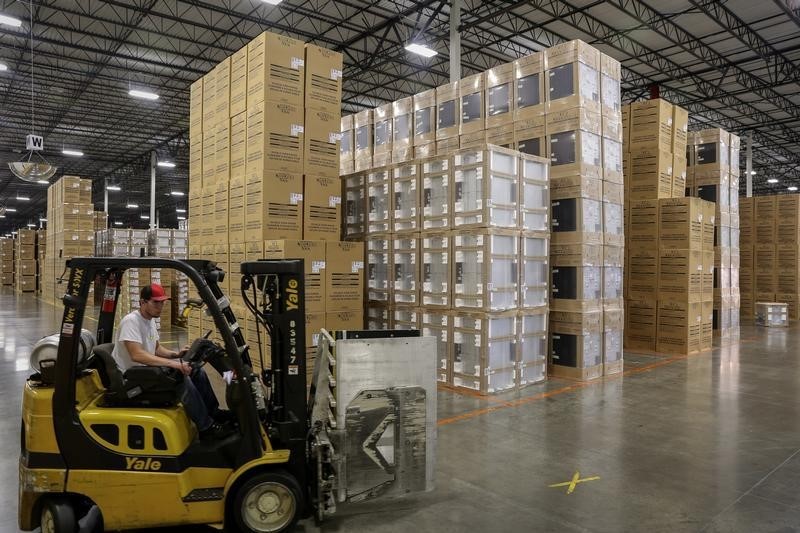(Bloomberg) -- American manufacturers remain competitive and lower goods exports aren’t solely to blame for a widening U.S. trade deficit and fewer manufacturing jobs, according to analysis by Goldman Sachs Group Inc (NYSE:GS).
It sees three key factors explaining the burgeoning trade gap and fall in production jobs:
- Unit labor costs in manufacturing have grown slowly, reflecting a surge in productivity growth from the 1990s through to the global financial crisis
- The goods deficit is better explained by the trends of U.S. specialization in services, fiscal deficits and global demand for safe assets
- While import competition from China has had an impact, the decline in the manufacturing share of employment from more than 30 percent in 1955 to less than 9 percent today is mainly due to improved productivity. The sector’s share in real output has been fairly stable
“Rising budget deficits have increased the trade deficit by lowering national net savings,” Goldman economists led by Chief Economist Jan Hatzius wrote in a note. “The rise in foreign demand for U.S. safe assets has likely also boosted the trade deficit through lower U.S. interest rates and a stronger dollar."
For now, Goldman is tipping the boost to U.S. second-quarter GDP from this year’s export surge will start to fade.
"We expect the trade deficit to rise further with strong U.S. demand and fiscal easing while the effects of tariffs are ambiguous, but likely smaller,” it said. “Overall, we expect a trade drag on GDP growth of one-quarter percentage point in 2018H2-2020."
